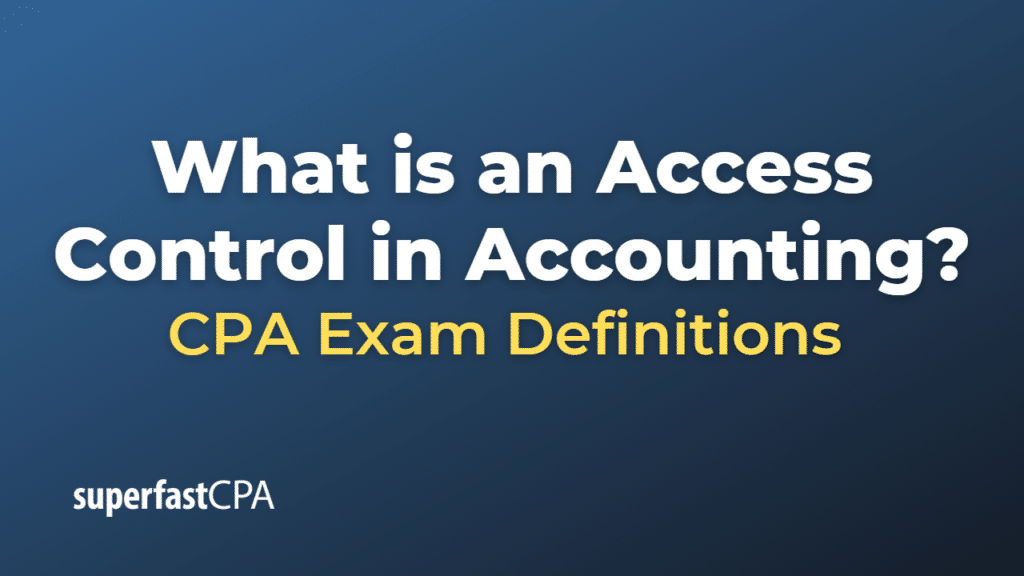Access Control in Accounting
Access control in accounting refers to the policies, procedures, and mechanisms that are put in place to manage, restrict, and monitor access to financial data, systems, and resources within an organization. The main objective of access control is to protect sensitive financial information from unauthorized access, tampering, and theft, and to ensure data integrity and confidentiality.
Access control is a critical component of a company’s internal control system, helping to prevent errors and fraud by restricting access to financial systems and data based on employees’ job responsibilities and the principle of segregation of duties. Access control measures are typically implemented through a combination of physical, administrative, and technical safeguards.
Examples of access control measures in accounting include:
- Physical access controls: These include locks, security systems, and surveillance cameras to prevent unauthorized access to physical locations where financial information and systems are stored or managed.
- Administrative access controls: These include policies, procedures, and employee training programs aimed at managing access to financial systems and data based on roles and responsibilities. They may involve periodic reviews of user access rights, background checks for employees handling sensitive financial information, and guidelines for granting and revoking access privileges.
- Technical access controls: These involve the use of technology to restrict access to financial systems and data, such as requiring user authentication (e.g., usernames and passwords or multi-factor authentication), implementing firewalls and encryption, and utilizing access control software to define and enforce user access rights based on job roles and responsibilities.
Maintaining robust access control measures in accounting helps organizations safeguard their financial data, mitigate the risk of fraud and errors, and comply with legal and regulatory requirements.
Example of an Access Control
Let’s consider a medium-sized manufacturing company that wants to implement effective access control measures in its accounting department. Here are some examples of how the company might establish physical, administrative, and technical access controls:
- Physical access controls:
- The company restricts access to the accounting department using a secure entry system, such as a keycard system or biometric access control.
- The server room, where sensitive financial data is stored, is secured with an additional layer of access control, such as a lock and key or a combination lock.
- Surveillance cameras are installed around the accounting department and server room to monitor and record activity.
- Administrative access controls:
- The company establishes a policy that defines the roles and responsibilities of employees within the accounting department, and access rights are granted based on these job functions.
- New employees in the accounting department undergo background checks and receive training on the company’s access control policies and procedures.
- Periodic reviews of user access rights are conducted to ensure that employees have appropriate access based on their job responsibilities, and to revoke access for employees who no longer need it.
- Technical access controls:
- The company implements user authentication measures, such as unique usernames and passwords, or multi-factor authentication, for employees accessing the accounting software and financial systems.
- Firewalls and encryption are employed to protect sensitive financial data transmitted and stored on the company’s network.
- Access control software is used to define and enforce user access rights based on job roles and responsibilities, ensuring that employees can access only the information and systems necessary for their job functions.
By implementing these access control measures, the manufacturing company can effectively protect its financial data, reduce the risk of unauthorized access, and maintain the integrity and confidentiality of its financial information.













